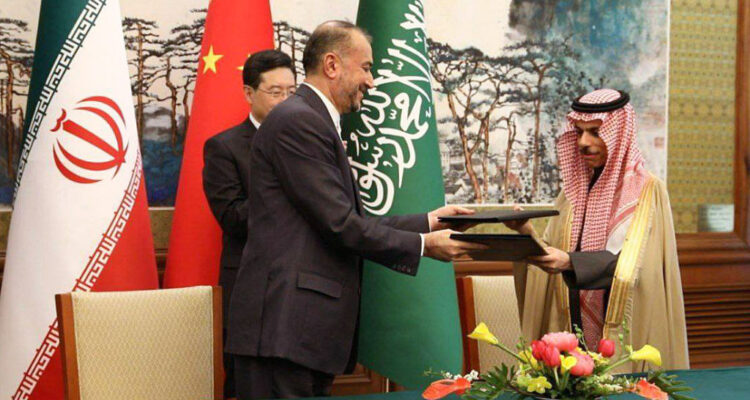May was a busy month for diplomats in the Middle East. Twelve years after the Arab League suspended Syria’s membership, Syrian President Bashar al-Assad was officially welcomed back into the fold. As the protracted war in Yemen shows signs of winding down, Iran and Saudi Arabia appear headed towards reconciliation. Meanwhile, Egypt brokered a ceasefire between Israel and Islamic Jihad, and Saudi Arabia has emerged as a key player in the efforts to end the civil war in Sudan.
What’s remarkable about these recent developments is the West’s near-total absence. While Western involvement in the Middle East has fluctuated over the years, the United States and its European allies have spearheaded the vast majority of diplomatic breakthroughs in the region since the end of the Cold War, including peace between Israel and Jordan, the normalisation of relations between Israel and the Gulf states, and the 2015 Iran nuclear deal.
Western engagement also included the invasion of Iraq in 2003, military intervention in Libya in 2011, support for anti-Assad rebels in Syria, and routing the Islamic State from its base in Syria and Iraq. The US also backed Saudi Arabia’s air campaign in Yemen. But all that remains of these efforts is 2,500 US troops in Iraq and 900 in Syria.
Read the article by Mark Leonard in The Strategist.

